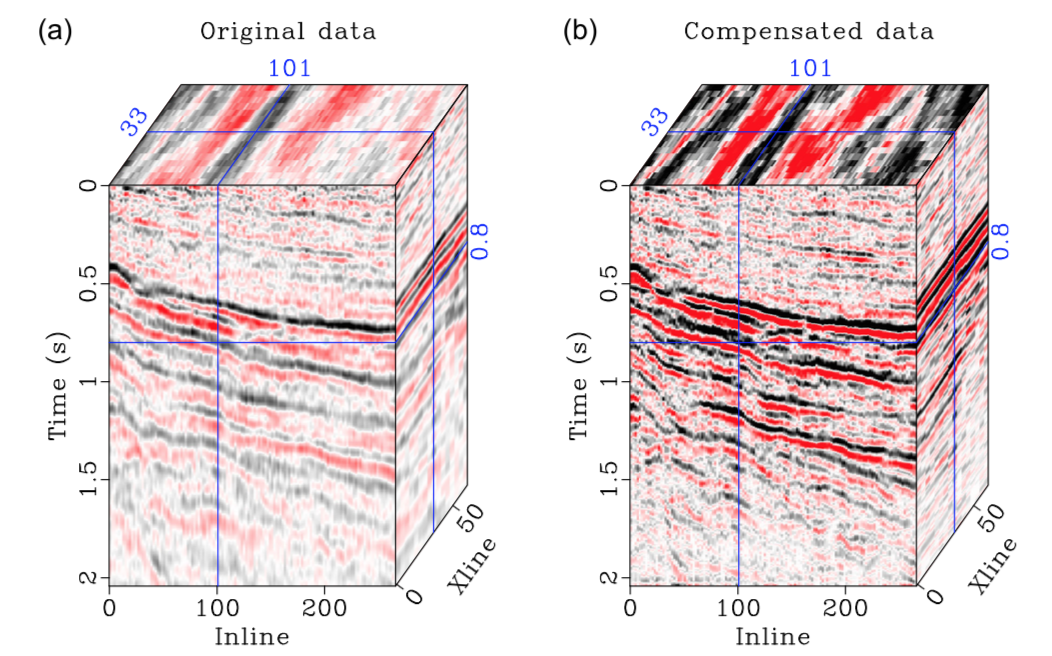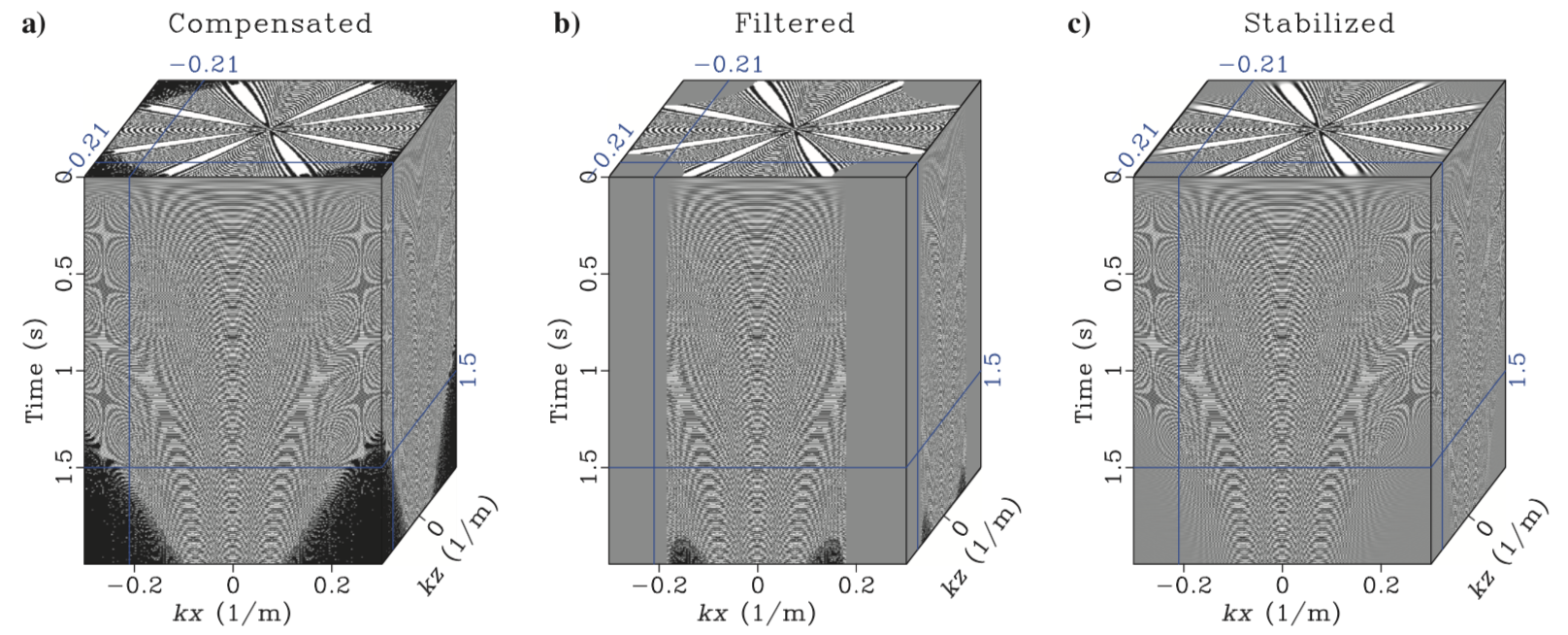When seismic waves travel through the earth subsurface, the absorption and dispersion caused by the anelasticity of the subsurface will inevitably degrade the quality of seismograms, decrease the resolution of migrated images, and eventually affect the reliability of seismic interpretation. It is essential to compensate amplitude loss and phase distortion. In general, attenuation compensation in geophysics can be roughly classified into two categories: seismic record-based compensation and propagation-based compensation.
$L_{1-2}$ minimization

Seismic attenuation compensation via $L_{1-2}$ minimization inversion scheme on 3-D field data.
a) Original attenuated data. b) The compensated data using our proposed $L_{1−2}$ minimization.
Adaptive stabilization

The compensated time propagator and stabilized time propagators, we clip the same amplitude value for these three figures.
a) The compensated time propagator without stabilization. b) The stabilized time propagator using low-pass Tukey filtering method. c) The stabilized time propagator using our proposed adaptive stabilization scheme.